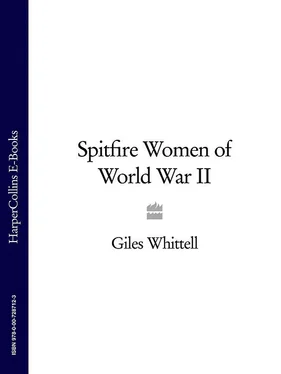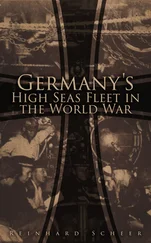Near Langholm 11.30 hours; aircraft flew into hill, the pilot having persisted too far into hilly country contrary to orders …
Thus perished the ATA’s only Siamese royal. Diana Barnato remembered him fondly. ‘Keen type,’ she wrote. ‘Pressed on too long. I shed a tear.’
By the time the Americans arrived, everyone who greeted them already understood what they had yet to learn. This flying lark was not a lark. The previous November Lettice Curtis had taken off from the Kirkbride (No. 16) Ferry Pool minutes before one of her most illustrious superiors, Captain Walter Handley of pre-war motorbike racing fame and the ferry pool at Hawarden, tried to do the same in a dreaded Airacobra. The engine over-revved and belched black smoke on the take-off run, but by that time Wally was committed. Seconds after leaving the ground his aircraft exploded.
Bridget Hill and Betty Sayer, the first women pilots to die, did not have the luxury of wondering in their final seconds what they could do to save themselves. They were passengers in a taxi plane that crashed through the roof of a house on the edge of the White Waltham aerodrome on 18 March 1942. Hill’s closest friend from school was another ATA girl, Honor Salmon. She, too, was dead by summer.
When Diana Barnato’s fiancé died, she cried briefly, in a phone box, until First Officer Corrie, one of the White Waltham one-armers, lost patience waiting for the phone and banged to be let in. But on the whole her compatriots conformed to stereotype. On hearing that a friend had died, they went quiet, pale, and after a while reached for the sherry.
This inordinate self-control impressed some of the visitors. Roberta Sandoz, one of the last Americans to arrive in 1942, eventually became friends with several of the earliest women recruits, including one who, she recalled, ‘had already lost her first husband and while she was flying with me her son was killed in the air force. I think she missed two days’ work. There was not a lot of embracing and sobbing and commiserating, and I admired that.’
Sandoz herself kept flying through the grief of losing her fiancé, a US Navy cadet who was killed in the Pacific shortly after her arrival in England. She was every bit as stoic as the British, but that did not stop the steely Lettice Curtis remarking that the Americans were much more outspoken than their European counterparts, ‘and more emotional when their fellow pilots were killed’.
Whether the stiff upper lip extinguished fear or hid it was a personal thing, but there is evidence that the ATA’s women may have coped better than its men with the imminence of death. There are repeated references in diaries and memoirs to men sitting around in common rooms on ‘washout’ days content to leave the verdict of the weather people unchallenged, while women took off into the murk on the off-chance of getting through. There was Betty Keith-Jopp, who remembered her lift-like descent to the bottom of the Firth of Forth six decades later with undimmed amazement – not so much at her escape as at thinking calmly of the insurance payment her mother would receive. There was Mary de Bunsen, lame from childhood polio and with a congenital heart defect that left her breathless every time she climbed into a Hurricane. ‘You know,’ she told a fellow pilot towards the end of the war, ‘when I was in training pool I was so certain that I was going to be killed within the next few weeks that I didn’t bother much.’ By morbid contrast there was Flying Officer W. F. Castle, married with a son, from Birmingham. He had arrived at White Waltham in November 1941 with both arms and both eyes but precious little confidence – which the ATA training staff proceeded to undermine.
Castle brooded nightly in his diary:
November 8th. Our instructors are forever emphasizing the lethal nature of the forces which will soon be under our control if misused. This point is pressed home as every subject is taken.
November 19th. Now that I have started flying it is being brought home to me very clearly that this is not what you would call a particularly safe job … Although we are not required to fly in bad weather it often seems to happen that someone has flown into a hillside during bad visibility. Three deaths are reported this week, and there must have been two or three others besides since I have been here. I dread to think of leaving Peg and Daniel alone … the thought of Daniel, my son, being brought up without me chills my heart. I am determined to take every precaution possible.’
The next day, after stalling on take-off in a Magister, Castle was close to desperate:
It is being borne in on me more and more that if I am to preserve my skin I must quickly develop a sound flying sense and take no chances whatever … The sooner I can get away from the congested area of White Waltham the better it will suit me.
As long as the very human Castle pondered his mortality, and the ice cool Lettice Curtis flew in and out of White Waltham, rain or shine, as if on auto pilot, there could be no room for overt male chauvinism within the ranks of the ATA.
In the wider world, it was a different story. From the moment Pauline Gower had first talked to Sir Francis Shelmerdine about hiring women pilots at government expense to help mobilise for war, those who considered flying somehow intrinsically male began to vent. And no-one gave them more space to do so than C.G. Grey, editor of Aeroplane magazine and an old friend of Betty Keith-Jopp’s uncle, Stewart. Early on, Grey weighed in himself. ‘We quite agree that there are millions of women in the country who could do useful jobs in the war,’ he wrote in reply to a letter Mary Bailey had sent in support of Gower. (Lady Bailey had flown from London to South Africa in a Tiger Moth in 1929, pausing only to attend a reception in her honour in Khartoum in a tweed flying suit.)
But the trouble is that so many of them insist on wanting to do jobs which they are quite incapable of doing. The menace is the woman who thinks that she ought to be flying a high-speed bomber when she really has not the intelligence to scrub the floor of a hospital properly, or who wants to nose round as an Air Raid Warden and yet can’t cook her husband’s dinner.
Grey was right about the dinner, wrong about the menace. Lettice Curtis was a consummate flyer and completely uninterested in cooking. To be obsessive about flying and deliberately careless about anything conventionally ‘female’ was, in fact, the norm for ATA girls. This infuriated Harold Collings ( Aeroplane , 5 January, 1940):
Women are not seeking this job for the sake of doing something for their country … Women who are anxious to serve their country should take on work more befitting their sex instead of encroaching on a man’s occupation. Men have made aviation reach its present perfection.
Some of Aeroplane ’s female readers agreed: ‘I think the whole affair of engaging women pilots to fly aeroplanes when there are so many men fully qualified to do the work is disgusting!’ one wrote. ‘The women themselves are only doing it more or less as a hobby, and should be ashamed of themselves!’
She was not entirely wrong. Some of the women had taken up flying strictly for practical reasons. Lettice Curtis and Ann Wood, for instance, insisted that at first they saw it simply as a livelihood. But for most it was indeed a hobby, and one that often deepened into an obsession. And why not? What self-respecting pilot would not have grown obsessional about the prospect, however remote, of flying something as fast and glamorous and responsive – and as feminine – as a Spitfire?
Nothing parked these days on the grass apron at White Waltham comes close to the sheer power of a Spitfire. Even the Mark 1, with its bashful two-bladed propeller, had the thrust equivalent of six supercharged racing Bentleys crammed into its nose. At 16,000 feet its 27-litre Merlin II engine could generate more than 1,000 horsepower; enough to pull the pilot wedged behind it through the air at more than half the speed of sound.
Читать дальше












